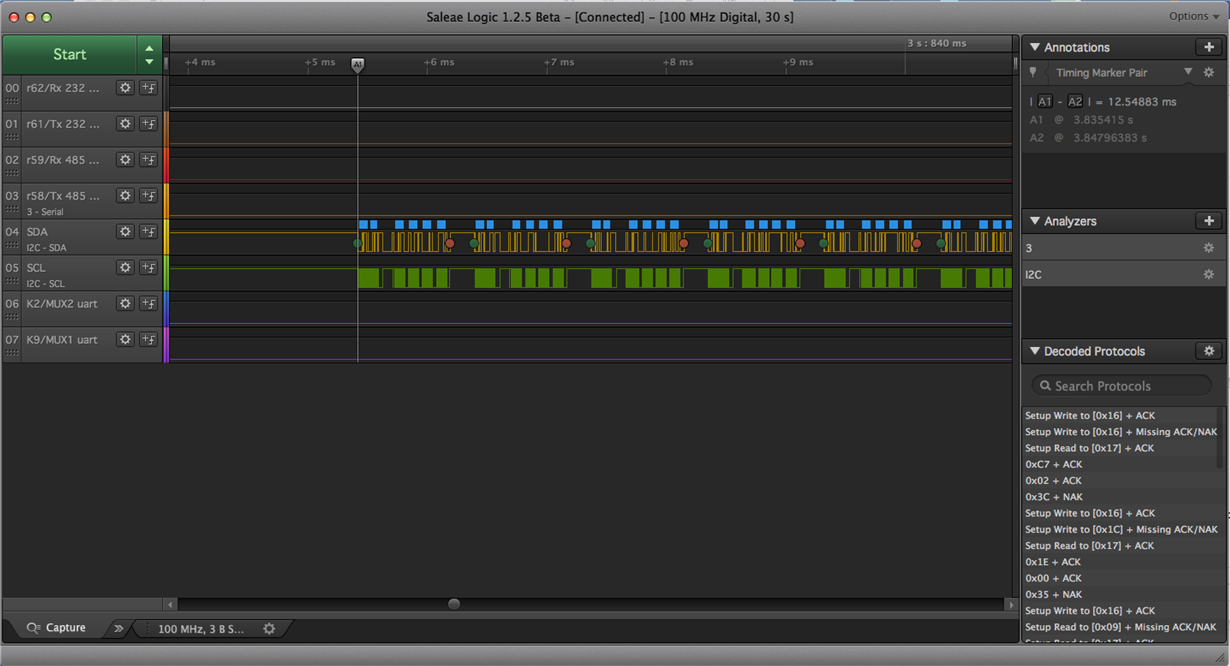Other Parts Discussed in Thread: MSP430F5438A
Tool/software: TI-RTOS
Hy,
I see two strange effect when writing bulk data (258byte) to I2C:
1)
Sometimes (about 2/3 of the cases) there is a gap of 38us between two bytes
2)
After some bytes (i.e. 24), one clock cycle seems shorter then usual (only 155ns). This byte is not understood by the I2C (eeprom) and gets not acknowledged.
Afterwards, the SDA line is kept low until a new I2C command appears. This seems to happen only on one of my devices, other ones work fine
Is there a possible improvement for 1) and what could be the root cause for 2)
Regards
Harald




